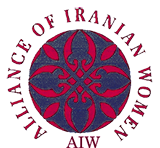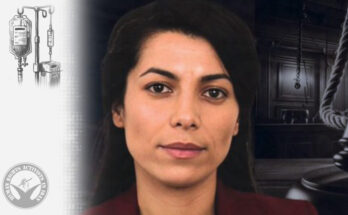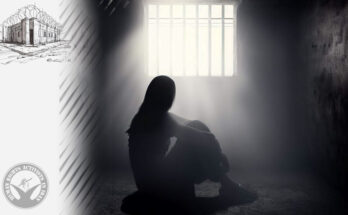Source: The Independent
The regime is not only classifying women’s rights activism as a symptom of mental instability but setting up new clinics aimed at ‘curing’ women who publicly remove their hijabs, writes Jemima Shelley—and it’s on the West to join the fight to protect Iranian women.

T fall of the Assad regime in Syria has dealt a devastating blow to the Islamic Republic of Iran. Iran’s clerical leadership has long been concerned that Assad’s collapse could trigger a domino effect and reach the streets of Tehran – with good reason.
As the Iranian regime grapples with this psychological setback, there has been a boost in morale among the people. Both regionally and domestically, the regime is looking increasingly fragile. Yet despite (and perhaps even because of) this growing fragility, the Islamic Republic is doubling down on its persecution of domestic dissent, especially women’s rights activists.
Now, in a disturbing twist, the authorities are not only classifying women’s rights activism as a symptom of mental instability, but are also setting up new clinics aimed at “curing” women who publicly remove their hijabs.
There has also been talk of an oppressive and draconian law – the “hijab and chastity” law – introducing harsher punishments for women who expose their hair, forearms or lower legs; even executions. This law has reportedly been paused due to fears of mass protests.
This recent move by the Iranian regime is the latest in a longstanding campaign of violence and oppression against women.
Since its foundation in 1979, misogyny has been part of the warp and weft of the Islamic Republic. Women not only face persecution and abuse on the streets but are legally recognised as inferior to men. Husbands can prevent their wives from taking jobs that are deemed to be against “family values.” Married women need written permission from their husbands to obtain a passport or travel outside Iran. It is prohibited for a woman to sing and dance in public. But at the centre of this systematic oppression is the compulsory hijab law.
In the aftermath of the countrywide women-led protests of 2022-2023, which began after 22-year-old Mahsa Amini was abducted and murdered by regime officials for “improper” wearing of the hijab, the regime has redoubled its efforts to silence female dissent.
For years, the Iranian regime has blamed mental illness as a reason for women resisting the compulsory hijab. Now the regime seems set to put this medicalising approach to resistance on a systemic footing.
On 12 November, Mehri Talebi Darestani, the head of the Women and Family Department of the Tehran Headquarters for the Promotion of Virtue and Prevention of Vice, announced the opening of a “clinic for quitting hijab removal” that will use “psychological methods” to “cure” women who defy the compulsory hijab law. These “treatment centres” will no doubt be used to detain, torture, and force medication on Iranian women.
Facing backlash from both inside and outside of Iran, Iranian regime officials have sought to downplay Darestani’s announcement, stating the proposed clinic is part of a broader cultural plan that will not include coercive methods.
Given the history of women’s rights abuses by the Iranian regime, this is hard to believe.
The past month has been dire for Iranian women. Women’s rights defender, Varishe Moradi, who has dedicated her life to female empowerment, has been sentenced to death for supposed “armed rebellion”. This is a bogus charge. Her sentence spurred protests in Tehran’s infamous Evin Prison, where female prisoners – in a leaked audio file – can be heard shouting “Zan, zendegi, azadi” (“Woman, life, freedom”): the slogan made famous by the Amini protests.
Suspected cases of enforced disappearances of women also appear to be on the rise in recent weeks. Ahoo Daryaei, a female student at Tehran’s Islamic Azad University, stripped off her clothes to protest the “abusive enforcement” of the university’s dress code. She was violently arrested by security forces who bundled her up into a car and took her to a psychiatric facility. According to Iranian authorities, Daryaei has since been released without charge due to being “mentally unstable.”
Iranian women could face fines of up to £12,500, flogging, up to 15-year prison sentences – and even the death penalty – for peacefully protesting the compulsory hijab law. Yet polling reveals that 71 per cent of men and 74 per cent of women disagree with the mandatory imposition of the hijab. Despite extreme levels of persecution, Iranian women bravely continue their civil disobedience, but they should not have to do this alone.
The fall of Assad and of the Iranian regime’s entire regional strategy will turn attention to the Islamic Republic’s grip on domestic affairs.
A reckoning between the West and the Islamic Republic is on the horizon. Whatever approach Western policymakers decide to take with Iran, it cannot be so narrow that they disregard the extreme persecution of Iranian women.
The Iranian regime is gearing up for the next phase of its violent oppression of women – one in which dissent is transferred from the street to the clinic. Iranian women will not let this happen without a fight. We cannot – we must not – abandon them.
Jemima Shelley is a senior research analyst at United Against Nuclear Iran (UANI)




